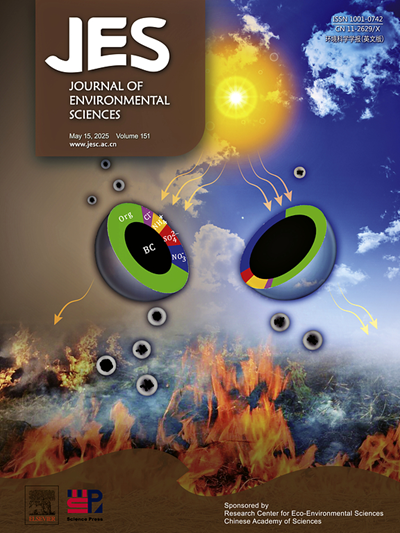Highly efficient mineralization of phenol through catalytic ozonation using urchin-like CuxCe1Oy-BTC catalysts derived from metal-organic frameworks
IF 5.9
2区 环境科学与生态学
Q1 ENVIRONMENTAL SCIENCES
引用次数: 0
Abstract
The efficient mineralization of phenol and its derivatives in wastewater remains a great challenge. In this study, the bimetallic CuCeO2-BTC was screened from a series of MOFs-derived MCeO2-BTC (M = La, Cu, Co, Fe, and Mn) catalysts, and the influence of the Cu/Ce ratio on phenol removal by catalytic ozonation was carefully examined. The results indicate that Cu2Ce1Oy-BTC was the best among the CuxCe1Oy-BTC (x = 0, 1, 2, and 3) catalysts, with a phenol mineralization efficiency reaching close to 100 % within 200 min, approximately 30.1 % higher than CeO2-BTC/O3 and 70.3 % higher than O3 alone. The order of mineralization efficiency of phenol was Cu2Ce1Oy-BTC > Cu3Ce1Oy-BTC > Cu1Ce1Oy-BTC > CeO2-BTC. CeO2-BTC exhibited a broccoli-like morphology, and CuxCe1Oy-BTC (x = 1, 2, and 3) exhibited an urchin-like morphology. Compared with CuxCe1Oy-BTC (x = 0, 1, and 3), Cu2Ce1Oy-BTC exhibited a larger specific surface area and pore volume. This characteristic contributed to the availability of more active sites for phenol degradation. The redox ability was greatly enhanced as well. Besides, the surface of Cu2Ce1Oy-BTC exhibited a higher concentration of Ce3+ species and hydroxyl groups, which facilitated the dissociation of ozone and the generation of active radicals. Based on the results of radical quenching experiments and the intermediates detected by LC-MS, a potential mechanism for phenol degradation in the Cu2Ce1Oy-BTC/O3 system was postulated. This study offers novel perspectives on the advancement of MOFs-derived catalysts for achieving the complete mineralization of phenol in wastewater through catalytic ozonation.

求助全文
约1分钟内获得全文
求助全文
来源期刊

Journal of Environmental Sciences-china
环境科学-环境科学
CiteScore
13.70
自引率
0.00%
发文量
6354
审稿时长
2.6 months
期刊介绍:
The Journal of Environmental Sciences is an international journal started in 1989. The journal is devoted to publish original, peer-reviewed research papers on main aspects of environmental sciences, such as environmental chemistry, environmental biology, ecology, geosciences and environmental physics. Appropriate subjects include basic and applied research on atmospheric, terrestrial and aquatic environments, pollution control and abatement technology, conservation of natural resources, environmental health and toxicology. Announcements of international environmental science meetings and other recent information are also included.
 求助内容:
求助内容: 应助结果提醒方式:
应助结果提醒方式:


